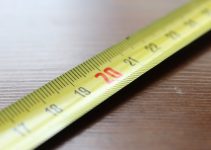Dehumidifiers are among the most common machines in our homes. Not everybody knows how to use a dehumidifier correctly. Operating a dehumidifier is not as difficult as you may think. With just a few steps you can install and start using the machine to draw out moisture from your home. Some of the things a dehumidifier can do for you are:

- Extract excess moisture from the air
- Eliminate mold, dry clothes, and more.
This article will teach you exactly what to do in to get your dehumidifier working.
Here are some guidelines on how to use a dehumidifier:
1. Read the owner’s manual
First and foremost, start with the user’s manual. Read every line written on it about the machine to become familiar with the operational practices. You can keep the manual in a specific location where you can easily make reference to it.
2. Use a hygrometer to measure your room humidity level
With a hygrometer, you can determine the amount of humidity present in the air. The recommended relative humidity level should be between 45 to 50 percent. When humidity falls below 30 percent, it can lead to damage of your housing structure and cause separated wood floors, cracked ceilings, and other similar issues.
3. Plug the dehumidifier into a grounded outlet
The next step is to plug the dehumidifier into a polarized, three-pronged grounded outlet. If you do not have a proper plug, you can hire an electrical expert to help you install a grounded outlet. Never use an extension cord with the machine.
Caution:
- Whenever unplugging it, do not pull the cord at the plug. Never pull the cord to remove it.
- Do not let the dehumidifier cord become pinched or bent.
4. Turn on and adjust the dehumidifier settings
Turning on and adjusting your dehumidifier settings depends on the dehumidifier model you have. Measure the hygrometer readings, and then adjust the level until you reach an appropriate relative humidity. Keep running the dehumidifier until the desired RH level is reached.
5. Leave it to run through several cycles
Using the dehumidifier for the first time will be the most productive time. You will be eliminating most of the excess water in your home air over some hours, days, or maybe for weeks. After running it for the first time, you may continue to maintain a normal humidity level instead of bringing it down drastically.
You will be able to set the amount of humidity that you desire on your dehumidifier when you plug it in.
6. Close doors and windows to the room
If you live in a larger space room, your humidifier will have to work harder. When you close your doors and windows, the dehumidifier will only work to remove water from the room.
If you need to dehumidify your bathroom, try placing the dehumidifier in areas there is high concentration. Close your toilet lids to prevent the dehumidifier drawing water out of the toilet.
7. Empty the water reservoir tray frequently
Dehumidifiers can create plenty of moisture depending on the humidity level of your room where it operates. If you will not be using your hose to drain the water into your sink, then you have to be emptying the reservoir regularly. If your unit has an automatic turn-off feature it will turn off each time the water tray is filled so that it won’t overflow and spill.
- Remove the plug from the power outlet before pouring out the water.
- Keep an eye on the water reservoir every hour, especially when the room is very humid.
- Check your product’s manufacturer guide to find the required frequency for dumping the tray.
Conclusion
Using a dehumidifier is as simple as ABC. This dehumidifier use guide has given you the information needed to installed and run your dehumidifier smoothly. You are now ready to start using your machine to drain out water from your home



